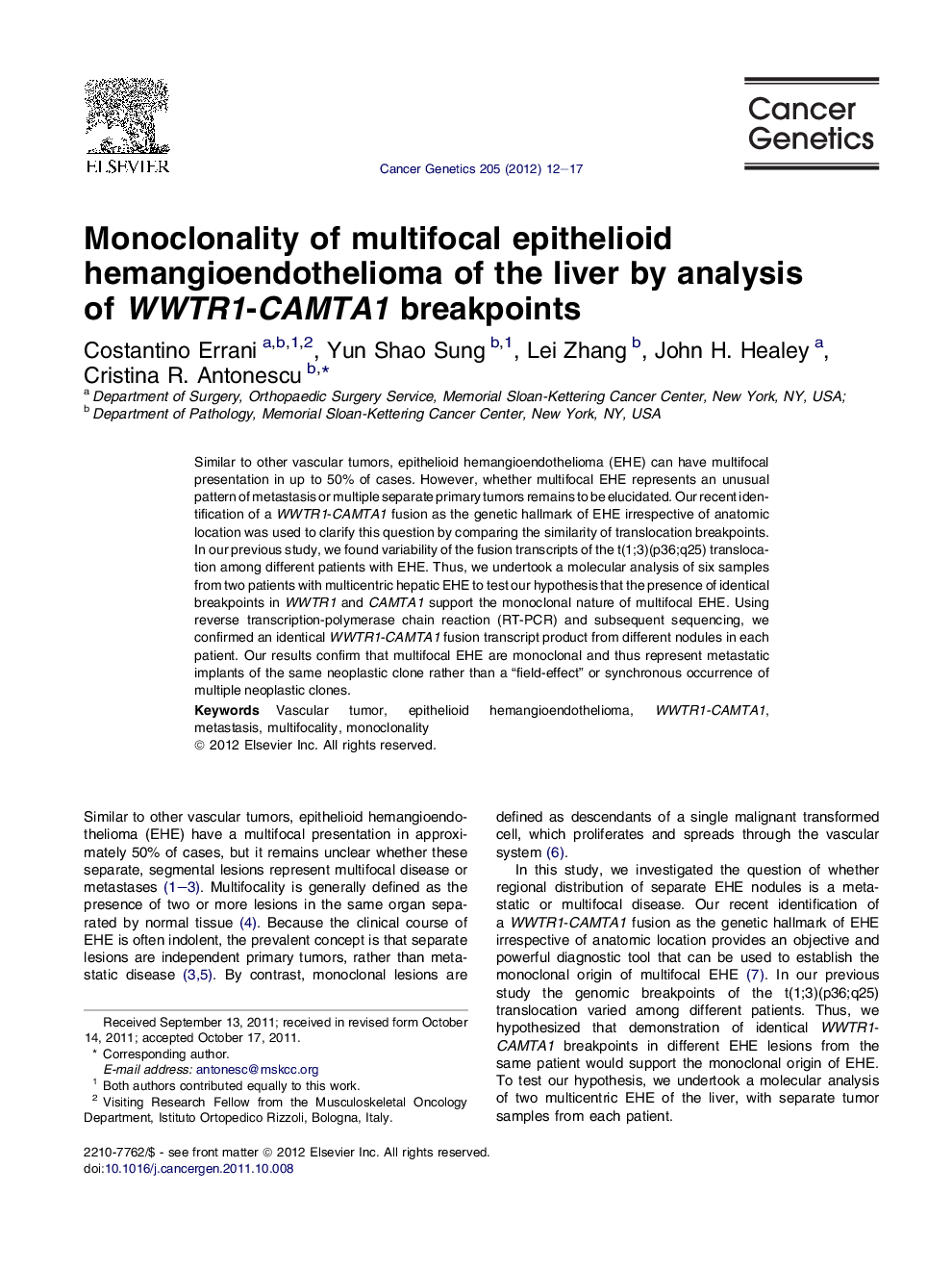| Article ID | Journal | Published Year | Pages | File Type |
|---|---|---|---|---|
| 2110460 | Cancer Genetics | 2012 | 6 Pages |
Similar to other vascular tumors, epithelioid hemangioendothelioma (EHE) can have multifocal presentation in up to 50% of cases. However, whether multifocal EHE represents an unusual pattern of metastasis or multiple separate primary tumors remains to be elucidated. Our recent identification of a WWTR1-CAMTA1 fusion as the genetic hallmark of EHE irrespective of anatomic location was used to clarify this question by comparing the similarity of translocation breakpoints. In our previous study, we found variability of the fusion transcripts of the t(1;3)(p36;q25) translocation among different patients with EHE. Thus, we undertook a molecular analysis of six samples from two patients with multicentric hepatic EHE to test our hypothesis that the presence of identical breakpoints in WWTR1 and CAMTA1 support the monoclonal nature of multifocal EHE. Using reverse transcription-polymerase chain reaction (RT-PCR) and subsequent sequencing, we confirmed an identical WWTR1-CAMTA1 fusion transcript product from different nodules in each patient. Our results confirm that multifocal EHE are monoclonal and thus represent metastatic implants of the same neoplastic clone rather than a “field-effect” or synchronous occurrence of multiple neoplastic clones.
